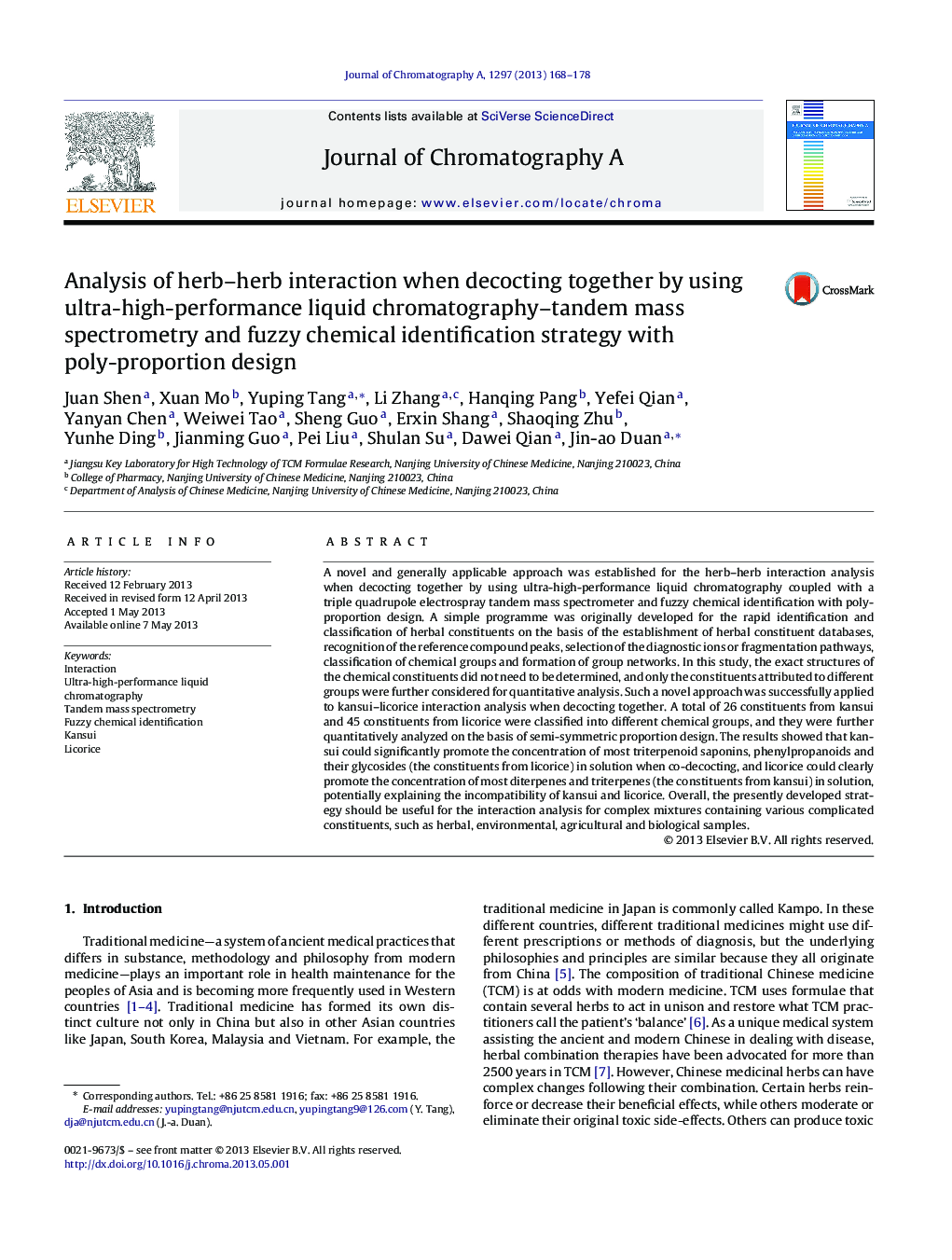| کد مقاله | کد نشریه | سال انتشار | مقاله انگلیسی | نسخه تمام متن |
|---|---|---|---|---|
| 1201540 | 1493629 | 2013 | 11 صفحه PDF | دانلود رایگان |

• Interaction analysis of multi-constituents in medicinal herbs during decocting in vitro.
• Chemical fuzzy identification strategy was used for herbal constituent classification.
• The approach is based on UPLC–TQ-MS, chemical fuzzy identification strategy and poly-proportion design.
• The approach has been successfully applied to the interaction analysis of multi-constituents in kansui and licorice.
A novel and generally applicable approach was established for the herb–herb interaction analysis when decocting together by using ultra-high-performance liquid chromatography coupled with a triple quadrupole electrospray tandem mass spectrometer and fuzzy chemical identification with poly-proportion design. A simple programme was originally developed for the rapid identification and classification of herbal constituents on the basis of the establishment of herbal constituent databases, recognition of the reference compound peaks, selection of the diagnostic ions or fragmentation pathways, classification of chemical groups and formation of group networks. In this study, the exact structures of the chemical constituents did not need to be determined, and only the constituents attributed to different groups were further considered for quantitative analysis. Such a novel approach was successfully applied to kansui–licorice interaction analysis when decocting together. A total of 26 constituents from kansui and 45 constituents from licorice were classified into different chemical groups, and they were further quantitatively analyzed on the basis of semi-symmetric proportion design. The results showed that kansui could significantly promote the concentration of most triterpenoid saponins, phenylpropanoids and their glycosides (the constituents from licorice) in solution when co-decocting, and licorice could clearly promote the concentration of most diterpenes and triterpenes (the constituents from kansui) in solution, potentially explaining the incompatibility of kansui and licorice. Overall, the presently developed strategy should be useful for the interaction analysis for complex mixtures containing various complicated constituents, such as herbal, environmental, agricultural and biological samples.
Journal: Journal of Chromatography A - Volume 1297, 5 July 2013, Pages 168–178